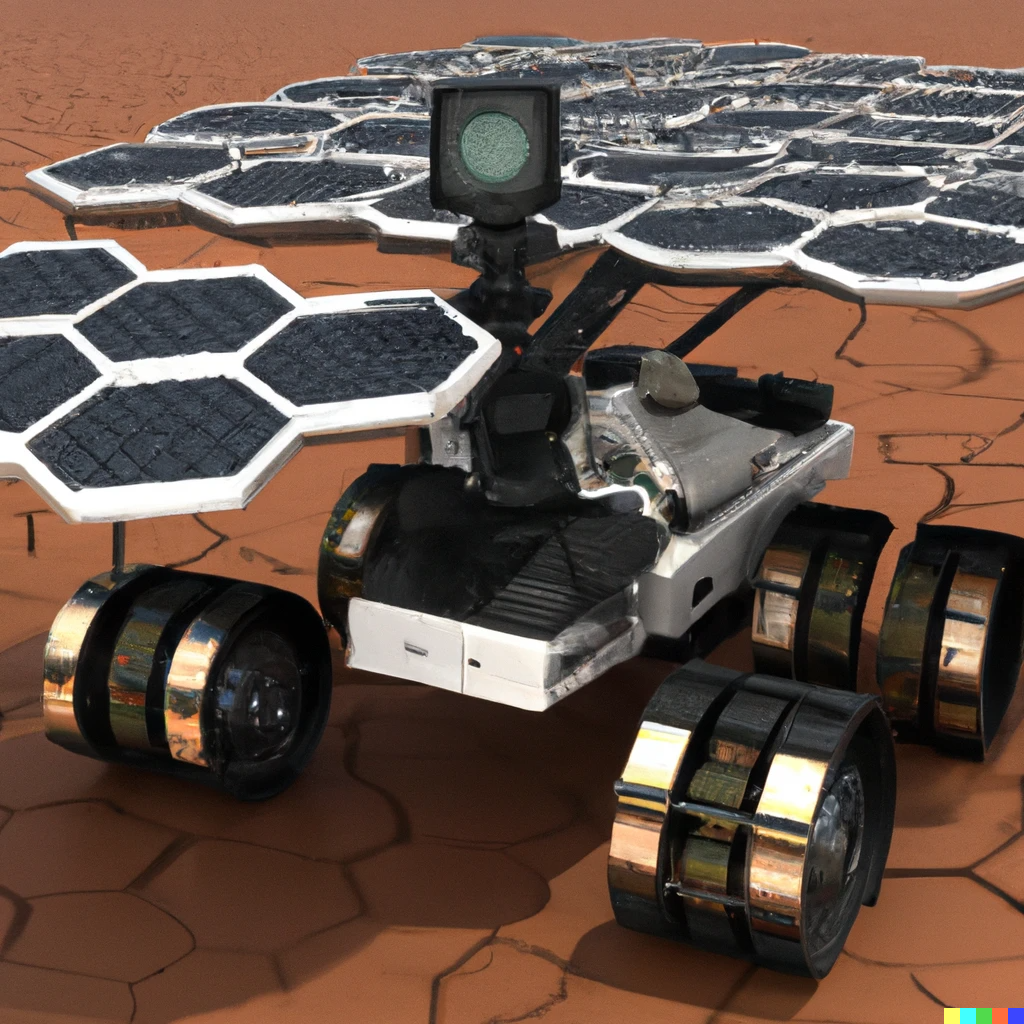Dust-Repellent Rover Panel Designs
Background
Many Mars rovers obtain their power from photovoltaics, the efficiency of which suffers from dust contamination. Past rover designs answered this challenge to a rover's mission lifetime by over-dimensioning the panels, such that the risk of reaching a problematic level of dust coverage between cleaning events is low. The term cleaning event thereby refers to the repellence of dust due to factors such as wind, vibrations or gravitation (when the rover is manoeuvring on a slope) [1]. Despite such a risk assessment, it happened that rovers came into situations in which the operations team decided to improvise, rather than hoping for a timely cleaning event. In 2019, the InSight rover's operations team managed to remove dust from the panels by scooping more dust onto them with the robotic arm of the rover. The dust grains then would get dragged over the panels by the wind, taking more dust with them in an avalanche effect [2]. While this worked, it also shows the the conventional dust solution of oversizing the panels, it by itself not necessarily sufficient. Several active and passive solutions have been proposed in the past, and are still being investigated, however are often ruled out for missions based on risk assessments (e.g. new mechanisms and parts pose additional risks of failure) and a cost benefit analyses (e.g. some solutions are themselves not tight on the energy budget).
Project overview

In our investigation of methods to make rover panels more resilient against the accumulation of dust, we are guided by three basic premises:
No additional parts should be introduced which are prone to wear and tear or pose other risk to a rover's mission.
Our solution should synergise with self cleaning mechanisms, such as wind and vibrations.
Our solution should synergise with other proposed solutions, which themselves may violate principles 1 and 2.
In other words: we aim for our solution to be a "no-brainer" to add to the design of the next generation Mars rover. Currently, we are investigating the breaking up of big panels into smaller tiles (Figure 1). The simple idea is that the gaps between the tiles allow for a greater efficiency of cleaning events. The effect could be enhanced by giving the tiles a convex surface.